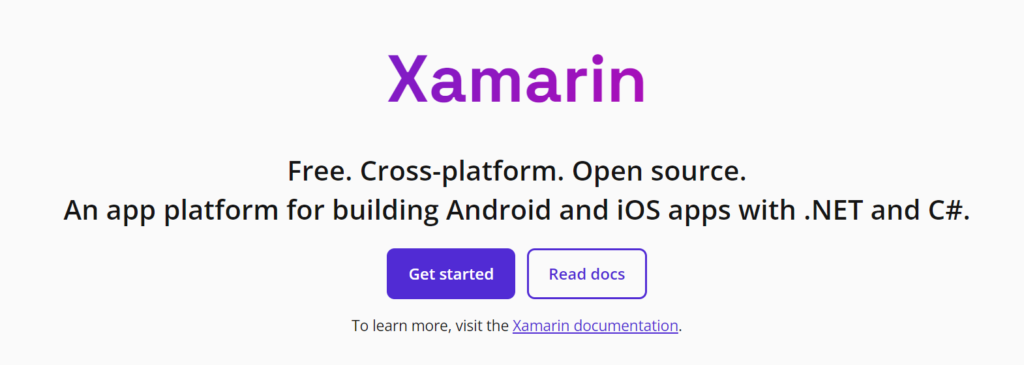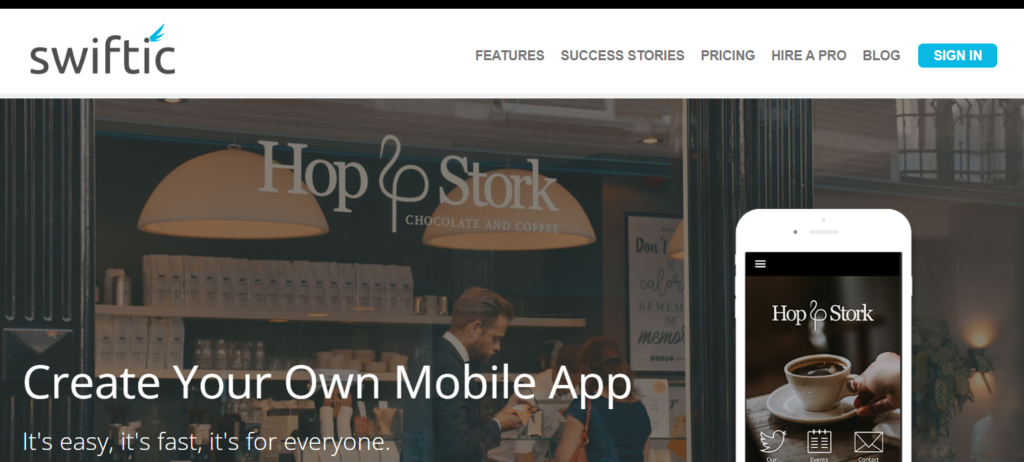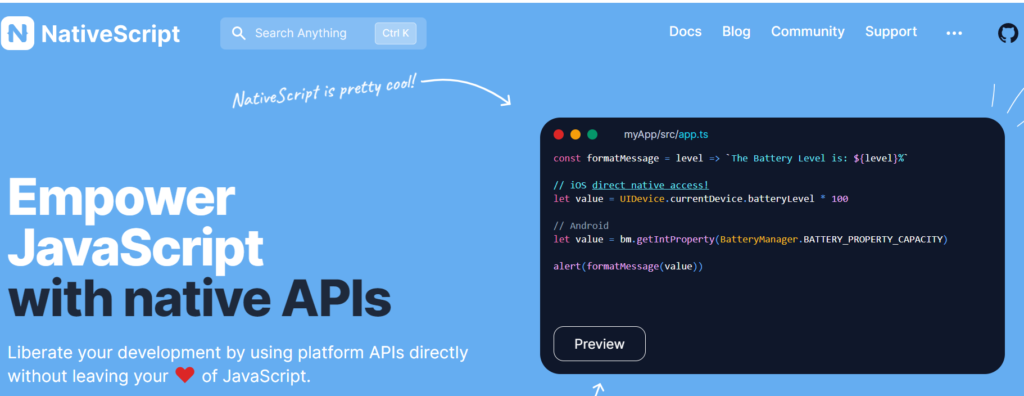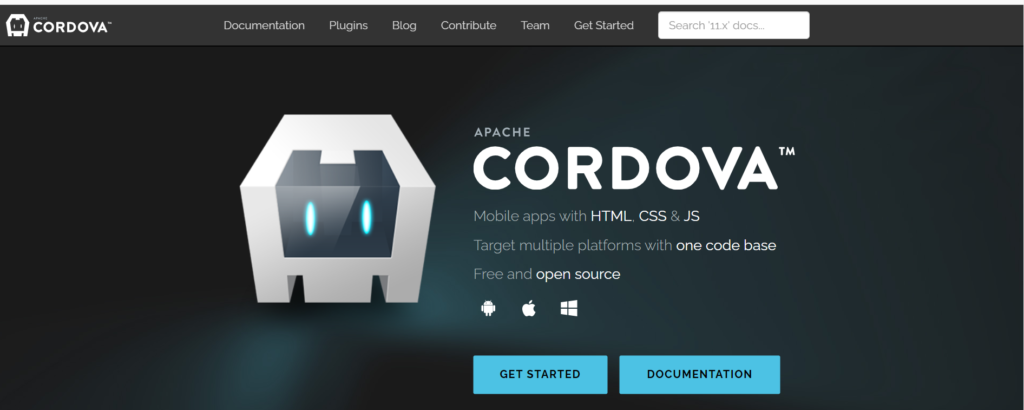
Close


The latest technologies used to develop a mobile application.
Several frameworks are available for developing mobile applications. This section will explore the most often used and most recently tested technologies for developing mobile applications.
According to research, mobile applications are the most effective approach for businesses to engage more customers. You do not need to know any specific programming language to create mobile applications; these frameworks have simplified your task. All you need is a basic understanding of a web-based programming language such as HTML, CSS, or JavaScript.
Mobile app development frameworks simplify app building. A mobile app framework is a software development platform that includes tools, compilers, debugging tools, and programming interfaces. Using the expertise of a reputed mobile app development company may help a firm generate fast, responsive, and user-friendly apps.
Native app framework and hybrid app framework are the two most widely utilized to construct mobile apps. Native app frameworks are created for specific operating systems such as Android, iOS, and Windows However, the cons of using a native app framework include higher development costs and reduced user participation. Since hybrid app frameworks may be used for various purposes, they are the best choice when limited funds and increased client involvement are top priorities.
Here are a few current frameworks for creating mobile applications. Both users of Android and iOS may find these to be quite useful.

React Native, engineered and managed by Facebook, has become a preferred choice for several programmers. It's an accessible hybrid framework. React Native apps from well-known corporations like Tesla, Airbnb, Skype, or Amazon Prime are the simplest examples.
React Native works equally to React, except it does not use the Virtual DOM. React elements wrap native code and communicate with native APIs using JavaScript and declarative UI. React Native uses a syntax equivalent to CSS but not HTML or CSS. JavaScript messages manipulate native views. Without React Native, developers got to write native code in Android's Java or Kotlin, iOS's Objective-C or Swift, and Windows 10s C++/Win RT or C#. React Native is additionally obtainable for each Window and macOS that Microsoft presently maintains.

Flutter by Google is an open-source UI software development kit for building cross-platform Android apps for iOS, Linux, macOS, and Windows. It was first mentioned in 2015 and finally released in May 2017.
The Flutter framework has two sets of widgets that adhere to different design languages: Material Design widgets use Google's Material Design language, while Cupertino widgets use Apple's iOS Human Interface principles. Flutter uses the dart programming language, while other languages are used for more advanced capabilities. While writing and debugging, Flutter uses the Dart virtual machine, which enables quick compilation and allows changes to source files to be directly injected into a running application. Flutter's engine, mostly built in C++, supports low-level rendering using either Google's Skia graphics library or the custom "Impeller" graphics layer.

Xamarin is yet another cross-platform application development framework for mobile app development. Because this framework utilizes the C# programming language, the applications require fewer lines of code, resulting in a faster writing process and script transfer between different systems, such as Windows and macOS.
Microsoft announced the acquisition of Xamarin in 2016, resulting in its integration with Microsoft Visual Studio, which proved beneficial for app development and productivity. Creating apps, particularly utilizing the Xamarin framework, has become really simple. However, concerns have been raised regarding sacrificing quality and functionality; however, there is no uncertainty about the framework's quality since it provides flawless native efficiency.
In Xamarin, an intermediate layer manages the relationship between the core system and standard code. After connecting with this known organization, programmers can nurture an ecosystem that includes APIs, back ends, components, and more.

Swiftic is a mobile app development platform with the goal of simplifying the process of creating custom apps for businesses. The ability to pull in fresh content from the web saves time and effort during the app's development process. It's one of the most adaptable frameworks for building mobile apps because of the excellent user experience, specialized finance, and uncomplicated approaches it provides.
There are a number of cutting-edge technologies integrated into the structure, such as push notifications, social network feeds, app advertising, and more. It's one of the most user-friendly options for making mobile apps because you can do everything from a single dashboard. All of Swiftic's plans come with a 30-day money-back guarantee. And if you don't see the results you want after six months, you can get your money back and keep using the service for free.

To develop PWAs, hybrids, and cross-platform mobile apps, Ionic provides a concrete foundation. Ionic is an open-source framework that allows developers to build native
The framework supports developers in constructing strong and feature-rich native apps. Ionic's main selling point is that it provides a flexible framework for building applications with a wide variety of user interface elements, including filters, input fields, view screens, menu bars, and action sheets.
Developers with experience in languages like HTML, JavaScript, and SSI can use the Ionic framework to develop hybrid/cross-platform mobile applications and cutting-edge web services.

The "write less, accomplish more" maxim is taken to the next level with the jQuery Mobile framework: The jQuery mobile framework enables you to create a single, highly branded responsive website or application that will function on all well-liked smartphones, tablets and desktop platforms rather than having to write individual programs for each mobile device or OS.
The Theme Roller and HTML5's solid framework allow jQuery to offer a wide range of customizable skins for web and mobile apps. You can choose between a customized framework and a stable release of jQuery Mobile. JQuery works well with PhoneGap and other mobile app development frameworks. The size of this framework is very limited, and Pl compatibility is both comprehensive and simple.

Building native mobile apps using Angular, Typescript, JavaScript, CSS, and Vue.js is a breeze with Native Script, a streamlined open-source framework. Progress created the plan and made it a reality. With the help of the npm package manager, you can get Native Script and all of its required plugins up and running on your machine. Tasks can be created, customized, and gathered using the command line or a graphical user interface tool called Native Script Sidekick.
XML files are used to define cross-platform user interfaces. After that, Native Script uses the inferences stored in the XML files to make calls to the appropriate native UI components on each platform. Angular with Typescript allows for the development of platform-independent application logic. Using the node.js runtime and associated tools, a native mobile app development framework may be created. With Native Script, you can reduce the amount of code and the amount of time it takes for the program to load on the system.

PhoneGap is a cross-platform mobile app development framework. Its core languages are HTML5 and SS3, making it compatible with a wide variety of sensors and other hardware devices. PhoneGap is easy to pick up and use, letting developers make a single app that works across multiple platforms.
Here are some of the most popular mobile app development frameworks to consider using for your next project. Just get started already! All you have to do is figure out what features your mobile app needs, decide on a suitable framework, and get to work on it.